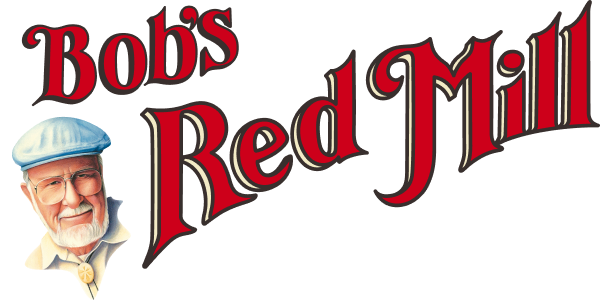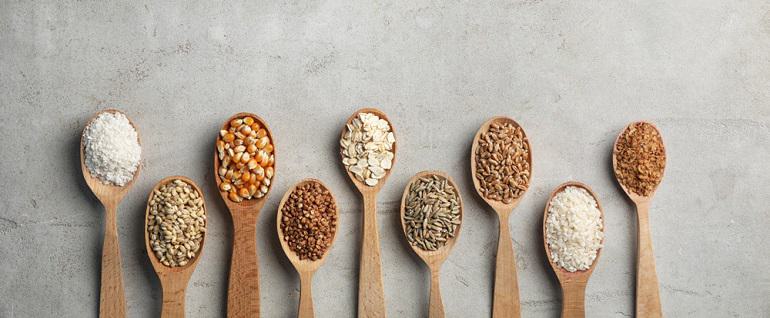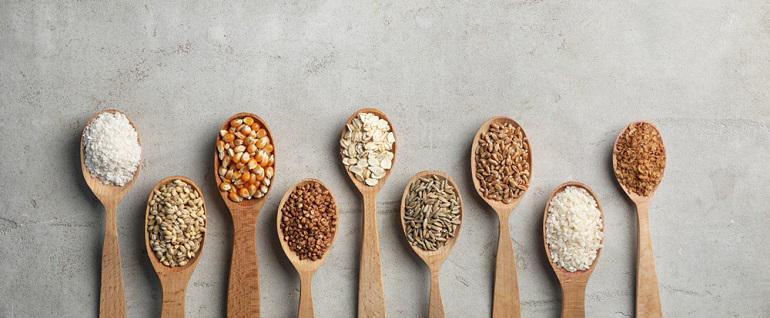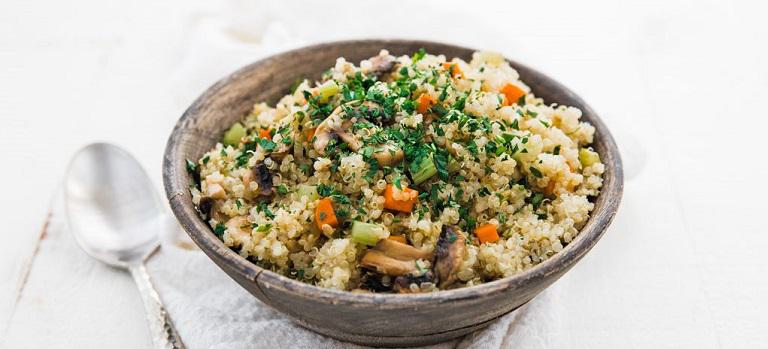


 Over the past few years, quinoa has increased in popularity, and for a good reasonit's incredible for you! Though technically a seed, quinoa is often treated as and considered a grain. Despite its recent gain in popularity, quinoa is not new at all. In fact, quinoa has been grown and consumed for well over 5,000 years and is native to South America.
Packed with nutrients, quinoa has a delicious nutty taste and is incredibly easy to prepare. Whole grains are a crucial part of any healthy diet, and adding quinoa into your meal rotation is a fantastic way to meet your daily nutrition goal. Not sure if quinoa is the right grain for you? Check out these three reasons why we love cooking with quinoa regularly.
Over the past few years, quinoa has increased in popularity, and for a good reasonit's incredible for you! Though technically a seed, quinoa is often treated as and considered a grain. Despite its recent gain in popularity, quinoa is not new at all. In fact, quinoa has been grown and consumed for well over 5,000 years and is native to South America.
Packed with nutrients, quinoa has a delicious nutty taste and is incredibly easy to prepare. Whole grains are a crucial part of any healthy diet, and adding quinoa into your meal rotation is a fantastic way to meet your daily nutrition goal. Not sure if quinoa is the right grain for you? Check out these three reasons why we love cooking with quinoa regularly.
 Cultivated by the Aztecs, amaranth is a delicious gluten free protein that is derived from the fruit of a flowering plant. When cooking amaranth, you might find that it's similar to cooking pasta or rice. A dense grain, amaranth can be used to thicken stews, soups and sauces. Mixing amaranth with other superfood grains is a great way to lighten up the texture and create a dish that's overflowing with health benefits.
Cultivated by the Aztecs, amaranth is a delicious gluten free protein that is derived from the fruit of a flowering plant. When cooking amaranth, you might find that it's similar to cooking pasta or rice. A dense grain, amaranth can be used to thicken stews, soups and sauces. Mixing amaranth with other superfood grains is a great way to lighten up the texture and create a dish that's overflowing with health benefits.
 Known as the main ingredient in the Middle Eastern grain salad "tabbouleh," bulgur is a grain that has been around for over 4,000 years. Delicious and convenient, bulgur was initially grown in the Mediterranean region but has since been cultivated worldwide. So, what makes bulgur so unique? Aside from its many nutritional benefits, bulgur is one of the easiest grains to cook. Bulgur originates from cracked whole-grain wheat kernels. Before packaging, these kernels are parboiled and dried, resulting in a grain that cooks much more quickly than other varieties. Incorporating bulgur into your well-balanced diet is a great way to ensure that your meals are rich in health-boosting properties that will keep you feeling your best.
Known as the main ingredient in the Middle Eastern grain salad "tabbouleh," bulgur is a grain that has been around for over 4,000 years. Delicious and convenient, bulgur was initially grown in the Mediterranean region but has since been cultivated worldwide. So, what makes bulgur so unique? Aside from its many nutritional benefits, bulgur is one of the easiest grains to cook. Bulgur originates from cracked whole-grain wheat kernels. Before packaging, these kernels are parboiled and dried, resulting in a grain that cooks much more quickly than other varieties. Incorporating bulgur into your well-balanced diet is a great way to ensure that your meals are rich in health-boosting properties that will keep you feeling your best.